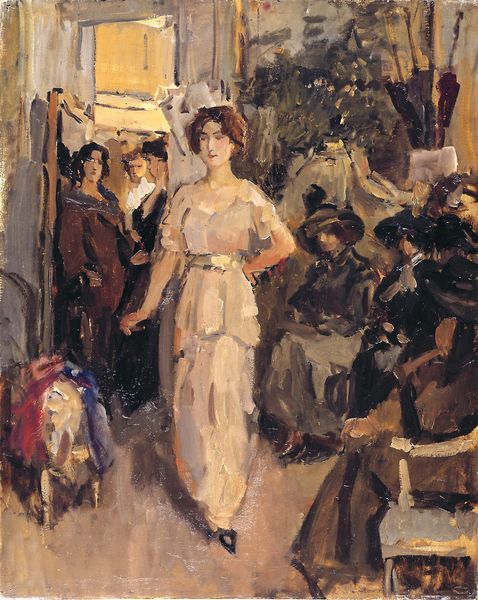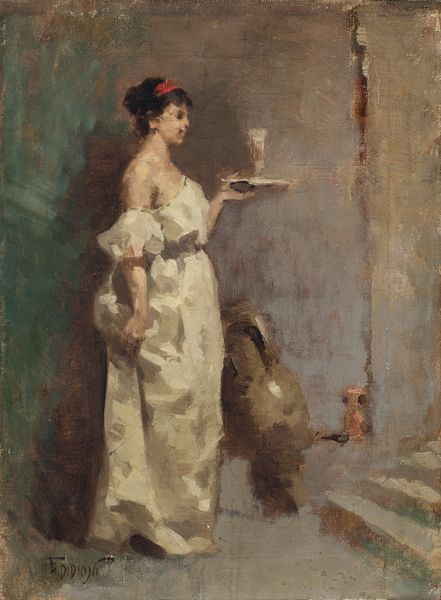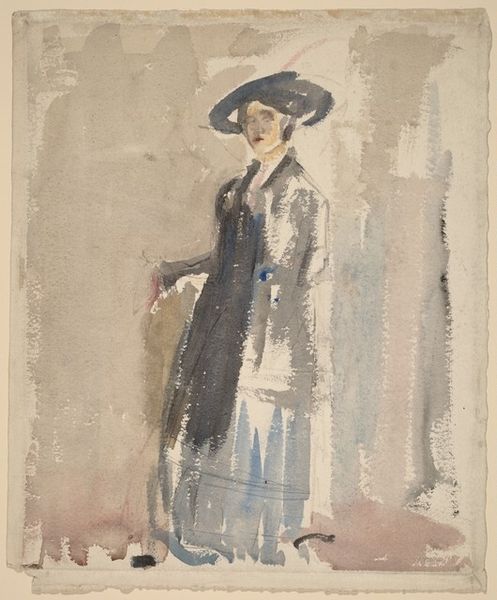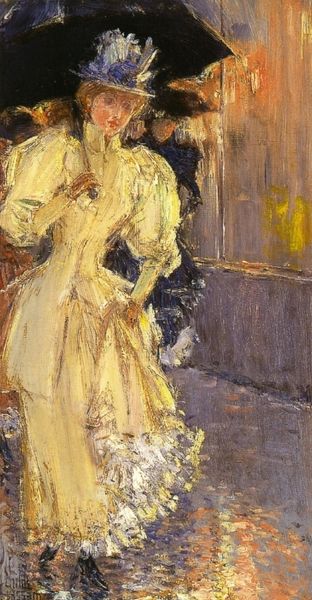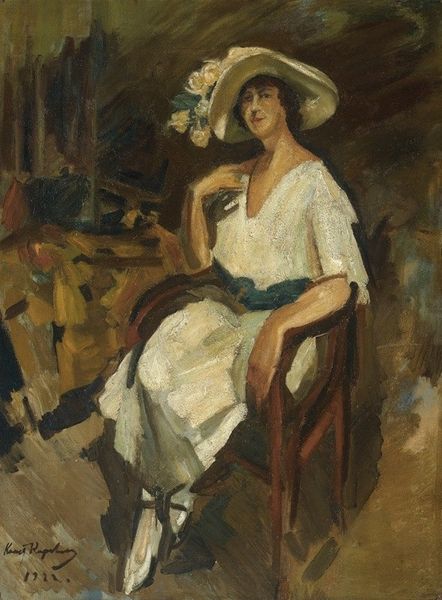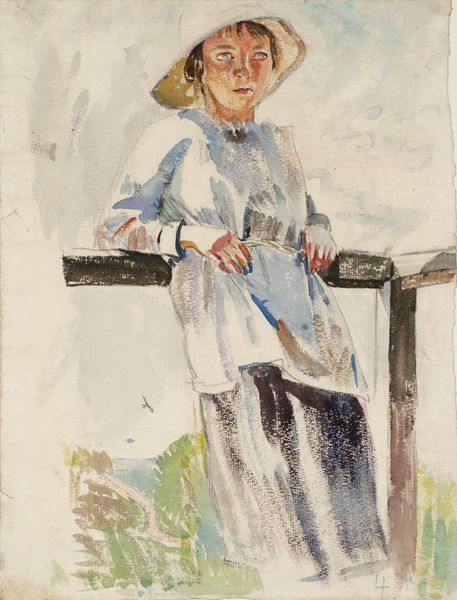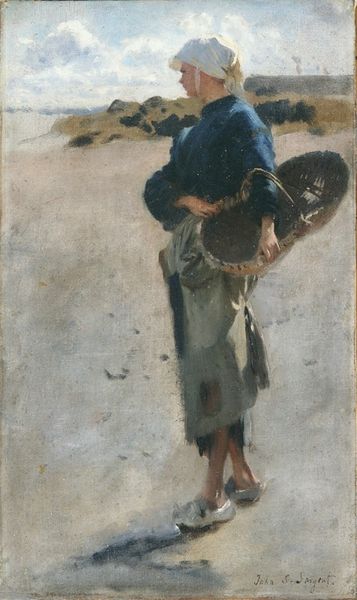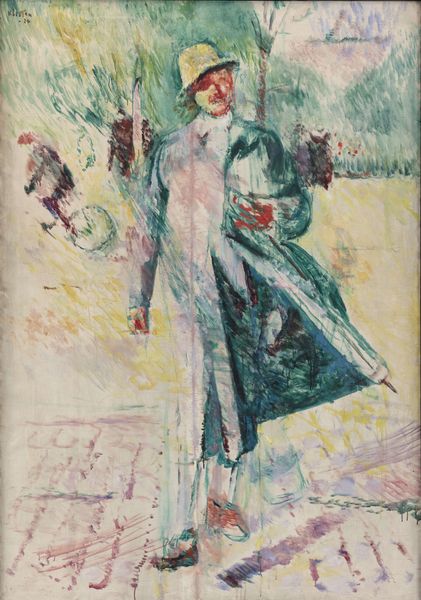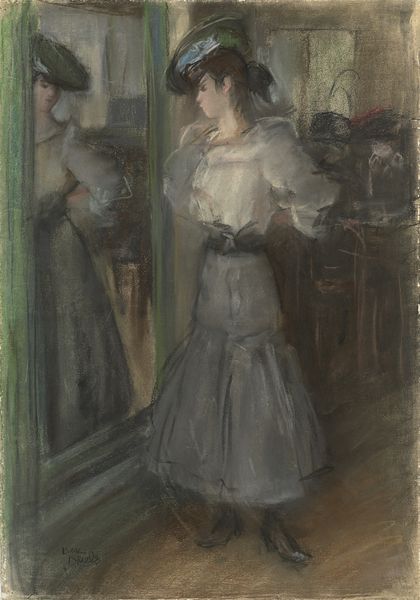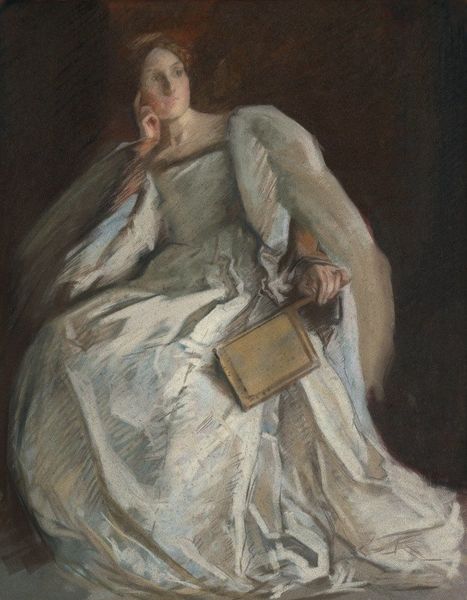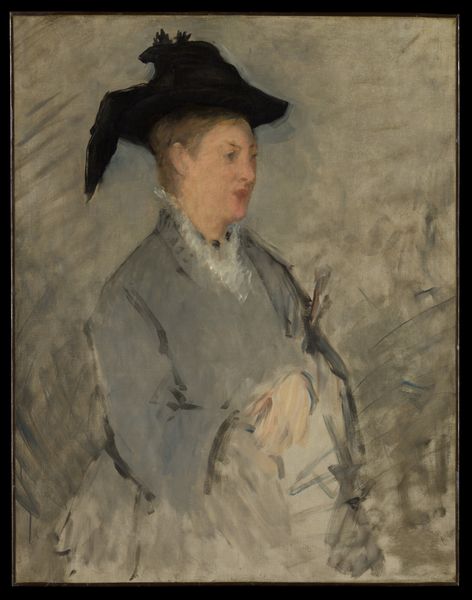
plein-air, oil-paint
#
gouache
#
impressionism
#
plein-air
#
oil-paint
#
landscape
#
oil painting
#
genre-painting
#
watercolor
Copyright: Public domain
Editor: Here we have "On the Boulevard of Scheveningen, the Pier in the Back" by Isaac Israels. I'm immediately struck by its muted tones and the sense of a bustling, yet hazy, beach day. What's your take on it? Curator: It’s interesting to see how Israels captures the democratisation of leisure. Before this period, beaches were primarily spaces for the elite, but the late 19th and early 20th centuries saw a shift. What details in the painting speak to that broader social change? Editor: Well, there are lots of figures milling around, not just one or two obviously wealthy individuals. Curator: Exactly! It's not just a depiction of a scene; it's a record of societal access. Israels, like other Impressionists, was keenly observing the evolving social fabric. Think about the implications of public spaces becoming truly public. How does the artwork serve a function, and is that function to just be hung on a wall? Editor: It becomes like a social document, a glimpse into a specific moment and how people interacted with the beach as a new kind of space. Is that why he chose this perspective, looking down from what seems like a high vantage point? Curator: Perhaps to highlight the sheer number of people, the democratization in action. The museum acquires a work such as this and then determines whether it functions as a window to the past, as commentary, or simply decoration. Its display can become a point of contention depending on its current cultural relevance. It all influences the value we assign it now, doesn't it? Editor: That’s fascinating, it shifts how I understand the work. It's more than just a pretty scene, it's a snapshot of social change. Curator: Precisely. It shows us the pier in its original location before its reconstruction in 1901, which provides interesting background information, even if it wasn't initially visible at first glance.
Comments
No comments
Be the first to comment and join the conversation on the ultimate creative platform.
